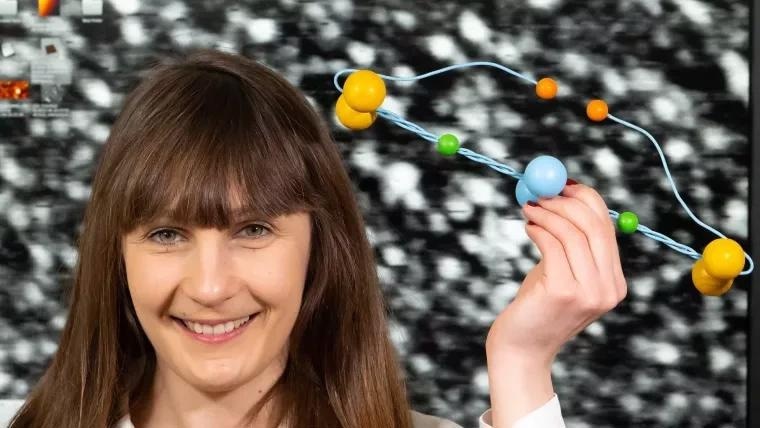In Germany, around 25,000 prosthetic heart valves are implanted each year because the natural heart valve has been harmed, for instance, by an infection. The long-lasting mechanical heart valves are constructed of titanium dioxide and other materials.
 Ph.D. student Maja Struczynska with the model of a single fibrinogen molecule. Image Credit: Jens Meyer (University of Jena)
Ph.D. student Maja Struczynska with the model of a single fibrinogen molecule. Image Credit: Jens Meyer (University of Jena)
However, there is a chance that blood clots will develop on the surface of mechanical heart valves since blood tends to clot when it comes in touch with these material surfaces.
If such blood clots separate from the materials, this could turn fatal. Due to this, most individuals with mechanical heart valves require medical treatments to prevent blood clotting throughout their lifetime.
Now, a potential method for significantly reducing blood clotting on titanium heart valve material has been created by an international research team.
The findings of a team from the Universities of Jena, Leipzig, and Illinois Urbana-Champaign (USA) and led by materials scientist Professor Klaus D. Jandt have recently been published in the journal Advanced Healthcare Materials.
By including the findings on the cover of the most recent edition, the journal further recognizes the significance and promise of this discovery.
Platelet Activity Changes According to Material Coating
The scientists created deposits of the blood protein fibrinogen on surfaces of titanium dioxide with various crystallographic orientations.
The surfaces of the coated material were subsequently exposed to blood platelets (thrombocytes), whose activity, together with fibrinogen, is crucial in developing blood clots. On the surfaces of the materials with various orientations, there were significant changes in platelet activity.
While the platelets are very active on (001) titanium oxide surfaces and thus promote blood clotting, we found the opposite effect on (110) surfaces. The reason for this is the different behavior of fibrinogen on the material surfaces.
Maja Struczynska, Ph.D. Student, University of Jena
Prof. Klaus D. Jandt added, “The mechanism for this effect is physical. Fibrinogen adopts a specific fold on the more hydrophobic (110) surface with low surface energy, which in turn limits the access of the primary amino acid sequences recognized by platelets, thus minimizing their adhesion.”
The use of these materials in heart valves has a lot of promise, according to Jandt, since it should lessen the possibility of blood clot development and the difficulties that go along with it.
Journal Reference:
Struczynska, M., et al. (2023) How Crystallographic Orientation-Induced Fibrinogen Conformation Affects Platelet Adhesion and Activation on TiO2. Advanced Healthcare Materials. doi:10.1002/adhm.202202508